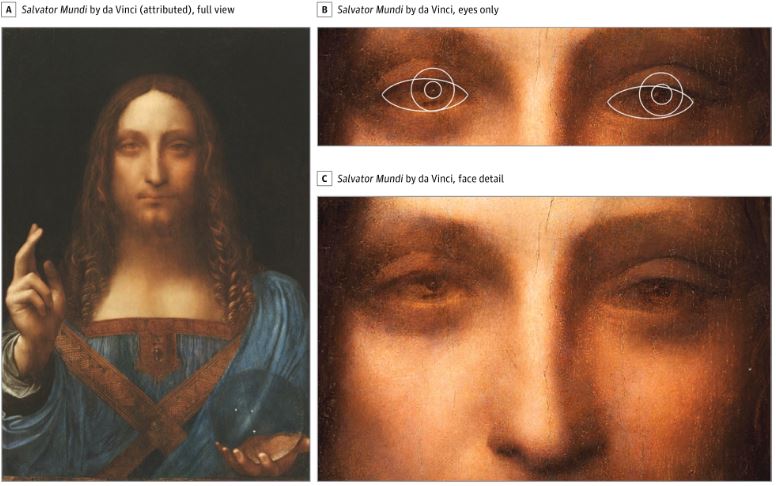What Made Leonardo da Vinci Such a Great Artist? 'Crossed Eyes' May Have Helped

Leonardo da Vinci may have literally seen the world differently.
The famed Renaissance artist may have had an eye condition that helped him better-depict the 3D world on a flat surface when drawing and painting, a new report suggests.
The report, which analyzed six works of art that are likely portraits or self-portraits of Leonardo, suggests that the artist may have had strabismus, or crossed eyes, a condition in which a person's eyes don't look in the same direction at the same time.
In some cases of strabismus, the vision in the "wandering" eye is suppressed, which gives the person 2D "monocular" vision that could be advantageous to painting and drawing, wrote report author Christopher Tyler, a visual neuroscientist and a professor in the City University of London's Division of Optometry and Visual Sciences in the United Kingdom. [Leonardo Da Vinci's 10 Best Ideas]
Thus, having strabismus "may have contributed to da Vinci's exceptional ability to capture space on the flat canvas," Tyler wrote in the Oct. 18 issue of the journal JAMA Ophthalmology.
An artistic eye
Some studies have found that visual artists are more likely than nonartists to have problems with their stereoscopic vision (perception of depth using two eyes), such as strabismus. And research has shown that some famous painters, including Rembrandt van Rijn and Pablo Picasso, had strabismus, based on analyses of their eyes in self-portraits.
However, there are few confirmed self-portraits of Leonardo da Vinci, making it hard to assess whether he had the condition.
Sign up for the Live Science daily newsletter now
Get the world’s most fascinating discoveries delivered straight to your inbox.
In the new report, Tyler analyzed six works of art that are thought to be portraits or self-portraits of the artist, or images that may reflect his likeness.
For example, the sculptures "David" and "Young Warrior" by Andrea del Verrocchio are thought to be modeled on Leonardo, who was an apprentice for the older artist. Three other artworks included in the study, "Young John the Baptist," "Salvator Mundi" and "Vitruvian Man," all by Leonardo, are not generally thought of as self-portraits of Leonardo, but they may have captured some of his appearance, Tyler said wrote. (Leonardo himself said, "[The soul] guides the painter's arm and makes him reproduce himself, since it appears to the soul that this is the best way to represent a human being.") Finally, the analysis also included a self-portrait of Leonardo in old age.
By analyzing the position of the pupils in the eyes of these artworks, Tyler found that the eyes tended to have exotropia, a type of strabismus in which one or both of the eyes turn outward. The presence of exotropia was more pronounced in portraits than in self-portraits. One explanation for this may be that Leonardo had "intermittent exotropia," meaning that the artist's eye condition was not constant, Tyler said. For example, the condition may have been more severe when Leonardo was relaxed but corrected itself when he was attentive or focused on a specific object.
It's important to note that the analysis presents a hypothesis, and it cannot prove that Leonardo had this condition.
Still, Tyler noted that having intermittent exotropia would be "rather convenient for the painter, since viewing the world with one eye allows direct comparison with the flat image being drawn or painted."
And if Leonardo's strabismus was intermittent, he could have also switched to viewing the world stereoscopically, Tyler said.
Originally published on Live Science.

Rachael is a Live Science contributor, and was a former channel editor and senior writer for Live Science between 2010 and 2022. She has a master's degree in journalism from New York University's Science, Health and Environmental Reporting Program. She also holds a B.S. in molecular biology and an M.S. in biology from the University of California, San Diego. Her work has appeared in Scienceline, The Washington Post and Scientific American.









